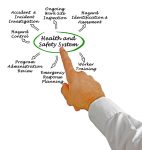Records, or It Didn’t Happen! A Training Records Checkup
During an Occupational Safety and Health Administration (OSHA) inspection, the inspector will ask to see a lot of written materials, including any records you have of training that has been provided to employees. If you don’t have the records—or if something is missing—OSHA is likely to cite you not for missing records but for failing […]










